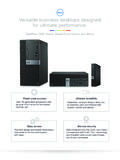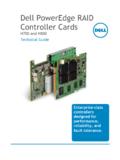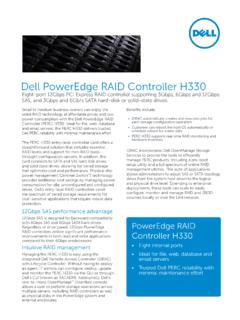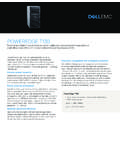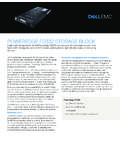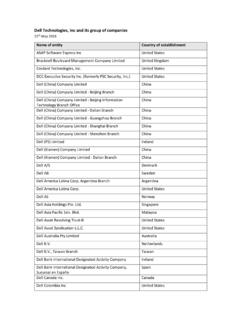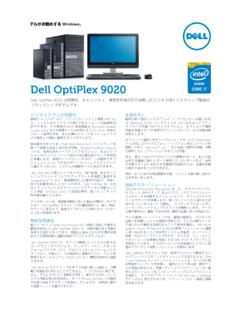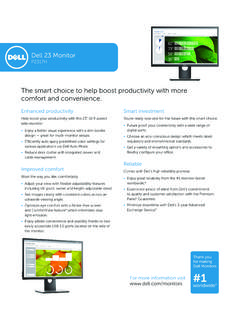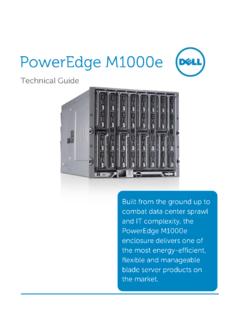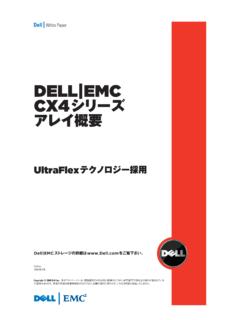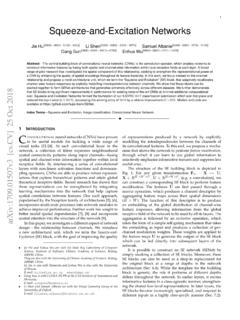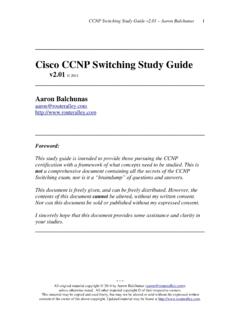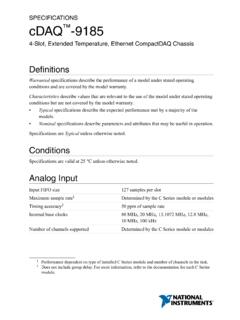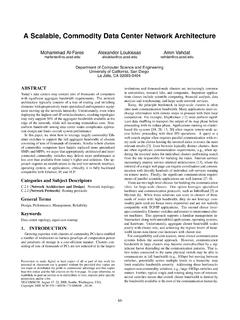Transcription of Stacking Dell Networking Switches: N4032, N4032F, …
1 Stacking dell Networking switches : n4032 , n4032f , N4064, N4064F. dell Engineering February 2014. A dell Deployment and Configuration Guide Revisions Date Description Author(s). February 2014 Initial Release Victor Teeter THIS PAPER IS FOR INFORMATIONAL PURPOSES ONLY, AND MAY CONTAIN TYPOGRAPHICAL ERRORS AND. TECHNICAL INACCURACIES. THE CONTENT IS PROVIDED AS IS, WITHOUT EXPRESS OR IMPLIED WARRANTIES OF. ANY KIND. 2014 dell Inc. All rights reserved. Reproduction of this material in any manner whatsoever without the express written permission of dell Inc. is strictly forbidden. For more information, contact dell . PRODUCT WARRANTIES APPLICABLE TO THE dell PRODUCTS DESCRIBED IN THIS DOCUMENT MAY BE FOUND AT: Performance of network reference architectures discussed in this document may vary with differing deployment conditions, network loads, and the like. Third party products may be included in reference architectures for the convenience of the reader.
2 Inclusion of such third party products does not necessarily constitute dell 's recommendation of those products. Please consult your dell representative for additional information. Trademarks used in this text: dell , the dell logo, dell Boomi , dell Precision ,OptiPlex , Latitude , PowerEdge , PowerVault , PowerConnect , OpenManage , EqualLogic , Compellent , KACE , FlexAddress , Force10 and Vostro are trademarks of dell Inc. Other . dell trademarks may be used in this document. Cisco Nexus , Cisco MDS , Cisco NX-0S , and other Cisco Catalyst are registered . trademarks of Cisco System Inc. EMC VNX , and EMC Unisphere are registered trademarks of EMC Corporation. Intel , Pentium , . Xeon , Core and Celeron are registered trademarks of Intel Corporation in the and other countries. AMD is a registered . trademark and AMD Opteron , AMD Phenom and AMD Sempron are trademarks of Advanced Micro Devices, Inc.
3 Microsoft , . Windows , Windows Server , Internet Explorer , MS-DOS , Windows Vista and Active Directory are either trademarks or . registered trademarks of Microsoft Corporation in the United States and/or other countries. Red Hat and Red Hat Enterprise . Linux are registered trademarks of Red Hat, Inc. in the United States and/or other countries. Novell and SUSE are registered . trademarks of Novell Inc. in the United States and other countries. Oracle is a registered trademark of Oracle Corporation and/or . its affiliates. Citrix , Xen , XenServer and XenMotion are either registered trademarks or trademarks of Citrix Systems, Inc. in the . United States and/or other countries. VMware , Virtual SMP , vMotion , vCenter and vSphere are registered trademarks or . trademarks of VMware, Inc. in the United States or other countries. IBM is a registered trademark of International Business.
4 Machines Corporation. Broadcom and NetXtreme are registered trademarks of Broadcom Corporation. Qlogic is a registered trademark of QLogic Corporation. Other trademarks and trade names may be used in this document to refer to either the entities claiming the marks and/or names or their products and are the property of their respective owners. dell disclaims proprietary interest in the marks and names of others. 2 Stacking dell Networking switches : n4032 , n4032f , N4064, N4064F. Table of contents Revisions .. 2. 1 Introduction .. 4. Stacking and 5. Simplified firmware updates for stack members .. 5. dell Networking 8100 Support .. 5. Stacking and redundancy .. 5. Nonstop forwarding on the stack .. 6. Hot add/delete and firmware synchronization .. 6. Meta-data 6. How a Master is selected .. 7. How to select a Master during initial stack setup .. 9. 2 Stacking scenarios .. 11. QSFP+ quad-breakout cables.
5 12. Creating a Stack .. 13. Command-line interface method .. 14. Web interface method .. 17. Automatic firmware updates for new members joining the stack .. 21. Adding new member units to a stack .. 23. Command-line interface method .. 23. Web interface method .. 27. Updating firmware on a stack .. 31. Command-line interface method .. 31. Web interface method .. 33. Removing member units .. 39. Command-line interface method .. 39. Web interface method .. 45. 3 Managing the standby unit .. 55. Command-line interface method .. 55. Web interface method .. 56. 4 Appendix A Commands used in this document .. 59. 5 Appendix B - network switch versions .. 60. 3 Stacking dell Networking switches : n4032 , n4032f , N4064, N4064F. 1 Introduction Most dell switches today include a Stacking feature that allows multiple switches to operate as a single unit. These stacks include up to twelve dell Networking n4032 / n4032f /N4064/N4064F switches in any combination, using up to four links between stack members.
6 Any Ethernet port type on the front panel can be used in creating these links, including SFP+, QSFP+, and 10 GbaseT. A single switch in the stack (known as the Master switch) manages all the units in the stack using a single IP address, which allows the user to access every port in the stack from this one address. This IP address is copied from the Master to the Standby when the Standby is created. If for any reason the Master fails, the Standby takes over as Master keeping the IP address of the stack the same. This allows continuous management of the stack. The new Master unit also continues to use the original Master unit's MAC addresses, which helps to reduce disruptions to the network . When a failed Master re-joins the stack, it does so as a member (not a Master). unless a new Master has not had time to be elected. Note: dell n4032 , n4032f , N4064, and N4064F series switches can be mixed in any combination within a stack.
7 This document provides an easy to use step-by-step guide on how to configure Stacking for the dell n4032 (Figure 1), n4032f (Figure 2), N4064 (Figure 3) and the N4064F (Figure 4). 1 3 5 7 9 11 13 15 17 19 21 LNK 23 ACT. 2 4 6 8 10 12 14 16 18 20 22 24. Figure 1 dell n4032 . 1 3 5 7 9 11 13 15 17 19 21 LNK 23 ACT. 2 4 6 8 10 12 14 16 18 20 22 24. Figure 2 dell n4032f . 7 9 11 13 15 17 19 21 23 25 27 29 31 33 35 37 39 41 43 45 LNK 47 ACT. LNK LNK. 2 4 6 8 10 12 14 16 18 20 22 24 26 28 30 32 34 36 38 40 42 44 46 48 ACT 1 2 ACT. Figure 3 dell N4064. 7 9 11 13 15 17 19 21 23 25 27 29 31 33 35 37 39 41 43 45 LNK 47 ACT. LNK LNK. 2 4 6 8 10 12 14 16 18 20 22 24 26 28 30 32 34 36 38 40 42 44 46 48 ACT 1 2 ACT. Figure 4 dell N4064F. 4 Stacking dell Networking switches : n4032 , n4032f , N4064, N4064F. Stacking and management An important advantage of Stacking is that it provides a consolidated interface for management of multiple switches that are linked together.
8 One switch acts as the Master through which the entire stack is managed through various interfaces (Web, CLI, and SNMP). After a stack is deployed in the network , operators can easily add units to the stack as their port requirements increase, with minimal administrative overhead. Additional stack members can immediately use existing configuration information such as routing and switching configurations, VLANs, ACLs, port profiles, and security certificates. Simplified firmware updates for stack members When switches are stacked, only the Master needs to be updated with new firmware. All other members of the stack will receive the firmware from the Master at that same time, reducing effort normally required when updating individual switches . Also, when a switch is added to a stack, if it is running a different version of firmware than the active version on the Master, the backup firmware on the new member is automatically updated to match the Master, the backup version of firmware on the new member is then activated, and the new member is rebooted.
9 dell Networking 8100 Support dell Networking 81xx/81xxF switches can be stacked with dell Networking N4000 switches , but only if all switches in the stack are running firmware or later, and all switches in the stack are running the same firmware revision. The firmware must be applied to the switches before they are added to the stack. dell Networking N4000 switches cannot be downgraded to releases like the 81xx can. Refer to the N4xxx Release Notes for more information. Stacking and redundancy By connecting a cable from the last switch in a stack back to the first switch, the operator makes sure that a stack has the protection of redundant paths for control and data traffic, including support for Link Aggregation Group (LAGs) configured across multiple switches . This means that any single point of failure (a switch or a stack cable failure) does not affect the overall operation of the remaining stack elements.
10 This type of topology is known as a ring, or loop topology. Without the final cable(s) connecting the two ends of the stack, the topology is a daisy-chain, which can cause multiple masters and ip address conflicts on the network when a middle switch or link goes down. It is therefore recommended to always use a ring topology when Stacking . Note: Ring topologies are highly recommended for resiliency and fault tolerance over the daisy-chain. 5 Stacking dell Networking switches : n4032 , n4032f , N4064, N4064F. Daisy Chain topology Ring (loop) topology Nonstop forwarding on the stack The Nonstop Forwarding (NSF) feature allows the forwarding plane of stack units to continue to forward packets while the control and management planes restart as a result of a power failure, hardware failure, or software fault on the stack Master and allows the standby switch to quickly takeover as the Master. Hot add/delete and firmware synchronization Units can be added and removed to and from the stack without cycling the power on the stack.
